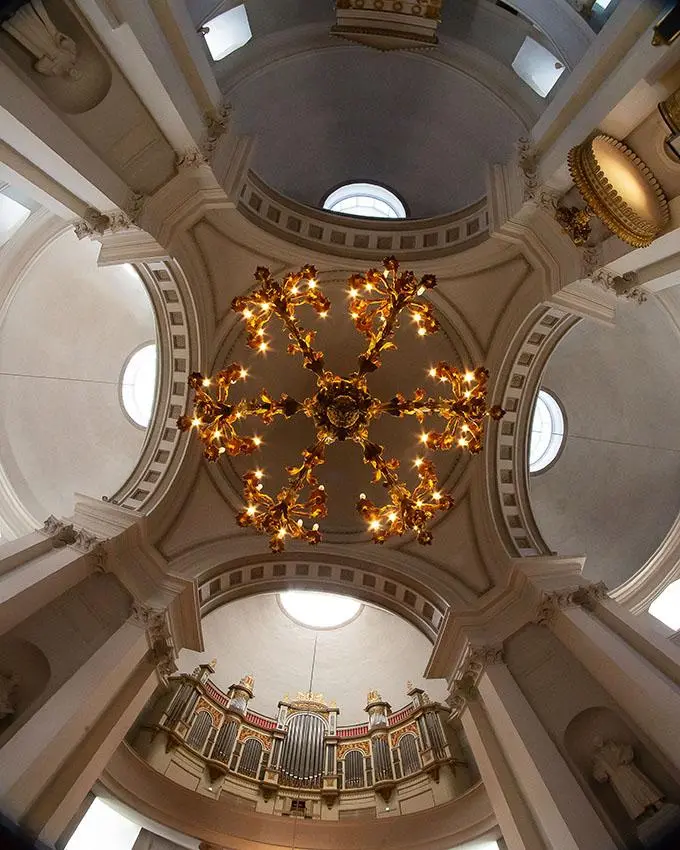
Architecture

Architecture
The Neoclassical Design of Helsinki Cathedral
Helsinki Cathedral is part of the Neoclassical empire-style centre of Helsinki designed by German architect Carl Ludvig Engel and the town planner Johan Albrecht Ehrenström. The Neoclassical church was designed by Engel, whose work was continued after his death by architect Ernst Bernhard Lohrmann, another German architect.
The church is built in the shape of a Greek cross, and every façade is identical. The central dome of the Cathedral rises to more than 80 metres above sea level. Outside the church appears larger than its compact interior volume. The tower dominating the exterior cannot seen from within.
Stylistically the church is primarily Corinthian. The pediment rests on six Corinthian pillars. The façades are decorated with pilasters matching the columns. This column order was favoured by Roman emperors and thus a logical choice for the main church in a grand duchy’s new capital city. There is more variety in the church interior where the massive corner pilasters are Corinthian but the columns supporting the galleries are Ionic.
The outside wall is further decorated with reliefs of scenes from the life of Christ by an unknown artist and above the main door there is the Hebrew word for God, Jahve.

